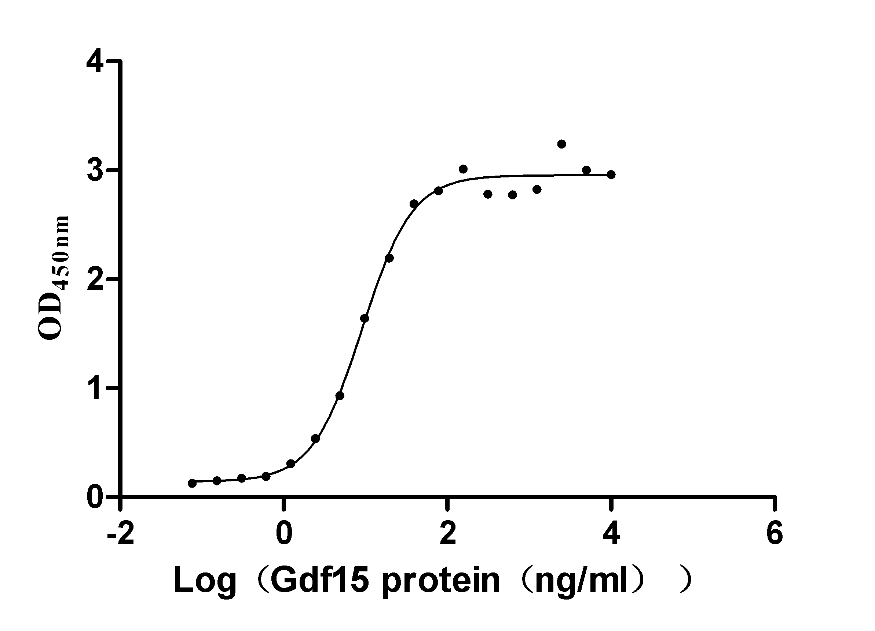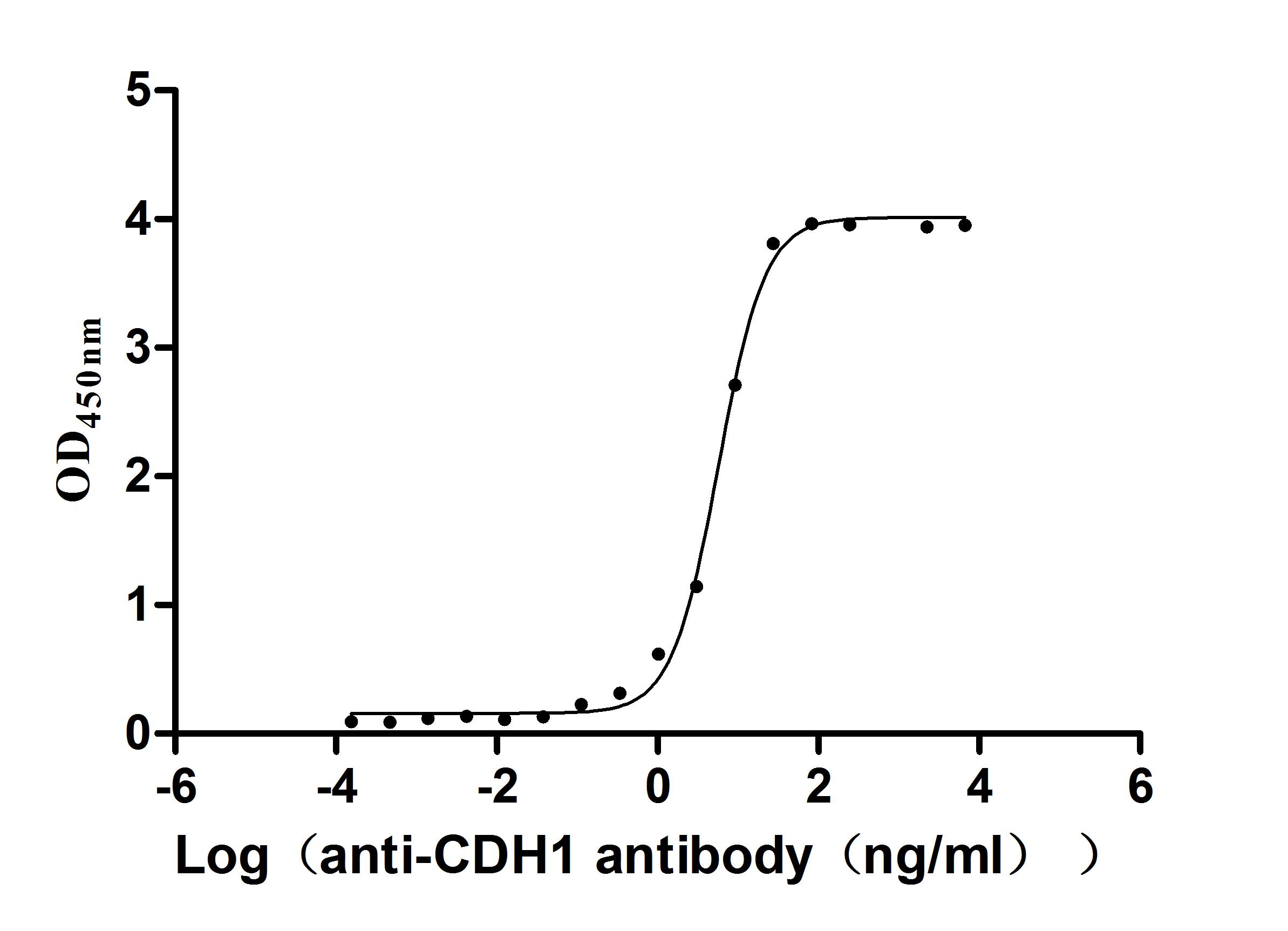Recombinant Human Pleckstrin homology-like domain family A member 1 (PHLDA1)
-
货号:CSB-YP845148HU
-
规格:
-
来源:Yeast
-
其他:
-
货号:CSB-EP845148HU-B
-
规格:
-
来源:E.coli
-
共轭:Avi-tag Biotinylated
E. coli biotin ligase (BirA) is highly specific in covalently attaching biotin to the 15 amino acid AviTag peptide. This recombinant protein was biotinylated in vivo by AviTag-BirA technology, which method is BriA catalyzes amide linkage between the biotin and the specific lysine of the AviTag.
-
其他:
-
货号:CSB-BP845148HU
-
规格:
-
来源:Baculovirus
-
其他:
-
货号:CSB-MP845148HU
-
规格:
-
来源:Mammalian cell
-
其他:
产品详情
-
纯度:>85% (SDS-PAGE)
-
基因名:PHLDA1
-
Uniprot No.:
-
别名:Apoptosis associated nuclear protein; Apoptosis-associated nuclear protein; DT1P1B11; MGC131738 ; PHLA1_HUMAN; PHLDA1; PHRIP ; Pleckstrin homology like domain family A member 1; Pleckstrin homology-like domain family A member 1; PQ rich protein ; PQ-rich protein; PQR protein; Proline- and glutamine-rich protein; Proline- and histidine-rich protein; T cell death associated gene ; T CELL DEATH ASSOCIATED GENE 51; T-cell death-associated gene 51 protein; Tdag; TDAG51
-
种属:Homo sapiens (Human)
-
蛋白长度:full length protein
-
表达区域:1-401
-
氨基酸序列MRRAPAAERL LELGFPPRCG RQEPPFPLGV TRGWGRWPIQ KRREGARPVP FSERSQEDGR GPAARSSGTL WRIRTRLSLC RDPEPPPPLC LLRVSLLCAL RAGGRGSRWG EDGARLLLLP PARAAGNGEA EPSGGPSYAG RMLESSGCKA LKEGVLEKRS DGLLQLWKKK CCILTEEGLL LIPPKQLQHQ QQQQQQQQQQ QQQQPGQGPA EPSQPSGPAV ASLEPPVKLK ELHFSNMKTV DCVERKGKYM YFTVVMAEGK EIDFRCPQDQ GWNAEITLQM VQYKNRQAIL AVKSTRQKQQ HLVQQQPPSQ PQPQPQLQPQ PQPQPQPQPQ PQSQPQPQPQ PKPQPQQLHP YPHPHPHPHS HPHSHPHPHP HPHPHQIPHP HPQPHSQPHG HRLLRSTSNS A
-
蛋白标签:Tag type will be determined during the manufacturing process.
The tag type will be determined during production process. If you have specified tag type, please tell us and we will develop the specified tag preferentially. -
产品提供形式:Lyophilized powder
Note: We will preferentially ship the format that we have in stock, however, if you have any special requirement for the format, please remark your requirement when placing the order, we will prepare according to your demand. -
复溶:We recommend that this vial be briefly centrifuged prior to opening to bring the contents to the bottom. Please reconstitute protein in deionized sterile water to a concentration of 0.1-1.0 mg/mL.We recommend to add 5-50% of glycerol (final concentration) and aliquot for long-term storage at -20℃/-80℃. Our default final concentration of glycerol is 50%. Customers could use it as reference.
-
储存条件:Store at -20°C/-80°C upon receipt, aliquoting is necessary for mutiple use. Avoid repeated freeze-thaw cycles.
-
保质期:The shelf life is related to many factors, storage state, buffer ingredients, storage temperature and the stability of the protein itself.
Generally, the shelf life of liquid form is 6 months at -20°C/-80°C. The shelf life of lyophilized form is 12 months at -20°C/-80°C. -
货期:Delivery time may differ from different purchasing way or location, please kindly consult your local distributors for specific delivery time.Note: All of our proteins are default shipped with normal blue ice packs, if you request to ship with dry ice, please communicate with us in advance and extra fees will be charged.
-
注意事项:Repeated freezing and thawing is not recommended. Store working aliquots at 4°C for up to one week.
-
Datasheet :Please contact us to get it.
相关产品
靶点详情
-
功能:Seems to be involved in regulation of apoptosis. May be involved in detachment-mediated programmed cell death. May mediate apoptosis during neuronal development. May be involved in regulation of anti-apoptotic effects of IGF1. May be involved in translational regulation.
-
基因功能参考文献:
- suggest a unique regulatory feature of PHLDA1 to inhibit the ErbB receptor oligomerization process and thereby control the activity of receptor signaling network. PMID: 29233889
- Data identified PHLDA1 as a novel p53 target with an ability to repress Akt. PHLDA1 has a so-called split PH domain divided into an N-terminal and a C-terminal portions and seems to be responsible for its localization to the plasma membrane and binding to phosphatidylinositol. In addition, PHLDA1 expression analysis suggests that PHLDA1 has a tumor suppressive function in breast and ovarian cancers. PMID: 30207029
- Our study negatively correlates expression of PHLDA1 and Aurora A in IMR-32 cells and sheds new light on functions of PHLDA1 in the neuroblastoma tumor cells, suggesting its role as a pro-apoptotic protein PMID: 27278006
- Suggest decreased expression of PHLDA1 may play an important role in tumor progression, and may become a new adjunct biomarker in the prognosis in gastric adenocarcinoma. PMID: 26191222
- Data suggest that high PHLDA1 expression is controlled through an ER-NFkappaB-miR-181 regulatory axis and may contribute to a poor clinical outcome in patients with ER+ breast tumors by enhancing stem-like properties in these tumors. PMID: 24954507
- PHLDA1 expression is a useful addition in differentiating trichoblastoma and basal cell carcinoma. PMID: 23719479
- A role for PHLDA1 as an apoptosis suppressor in oral cancer cells. PMID: 24270013
- Data show that downregulation of aurora A kinase by the therapeutic antibody is associated with decreased levels of MYCN protein in cytoplasm, and induced expression of PHLDA1 and P53 proteins. PMID: 23962557
- The follicular stem cell marker PHLDA1 (TDAG51) indicates that most basaloid tumors in nevus sebaceus are basal cell carcinomas and not trichoblastomas. PMID: 23489134
- PHLDA1 differentiates between desmoplastic trichoepithelioma and morpheaform basal cell carcinoma but shows variable staining in microcystic adnexal carcinoma. PMID: 23398472
- the release of Ca(2+) from endoplasmic reticulum stores mediates epithelial-to-mesenchymal transition in human proximal tubular epithelium via the induction of TDAG51 PMID: 22592641
- crucial negative regulator and effector of Aurora A kinase in breast cancer PMID: 21807936
- PHLDA1 expression marks the putative epithelial stem cells, downregulates ITGA2 and ITGA6, and contributes to intestinal tumorigenesis PMID: 21558389
- The progressive loss of PHLDA1 expression in melanomas may play a role in deregulated cell growth and apoptosis resistance in these tumors. PMID: 12384558
- expression of TDAG51 in human T-cells does not correlate with activation-induced cell death PMID: 15002043
- TDAG51 plays an important role in the anti-apoptotic effects of IGF-I. PMID: 15037619
- TDAG51 locus shows an operon-like organization of two head-to-head oriented transcripts that are inversely regulated in T lymphocytes by a CpG-rich bidirectional promoter. PMID: 15315823
- Reduced PHLDA1 expression is important in breast cancer progression and could serve as useful prognostic marker of disease outcome. PMID: 17211533
- TDAG51 in patients with intractable epilepsy was significantly higher when compared with levels in the controls. PMID: 17870236
- The anti-estrogen ICI 182,780 (1 microM) inhibited PHLDA1 mRNA expression and completely abolished the effect of 10 nM 17beta-estradiol on PHLDA1 expression (P < 0.05), suggesting that PHLDA1 is regulated by estrogen via ER. PMID: 18641796
显示更多
收起更多
-
亚细胞定位:Cytoplasm. Cytoplasmic vesicle. Nucleus, nucleolus.
-
组织特异性:Widely expressed with highest levels in pancreas. Strongly expressed by benign melanocytic nevi, and progressively reduced expressed in primary and metastatic melanomas (at protein level).
-
数据库链接:
HGNC: 8933
OMIM: 605335
KEGG: hsa:22822
STRING: 9606.ENSP00000266671
UniGene: Hs.602085
Most popular with customers
-
Recombinant Mouse GDNF family receptor alpha-like (Gfral), partial (Active)
Express system: Mammalian cell
Species: Mus musculus (Mouse)
-
Recombinant Macaca fascicularis CD93 molecule (CD93), partial (Active)
Express system: Mammalian cell
Species: Macaca fascicularis (Crab-eating macaque) (Cynomolgus monkey)
-
Recombinant Human Claudin-6 (CLDN6)-VLPs, Fluorescent (Active)
Express system: Mammalian cell
Species: Homo sapiens (Human)
-
Recombinant Human Cell adhesion molecule 1 (CADM1), partial (Active)
Express system: Mammalian cell
Species: Homo sapiens (Human)
-
Recombinant Human Interleukin-2 receptor subunit alpha (IL2RA), partial (Active)
Express system: Mammalian cell
Species: Homo sapiens (Human)
-
Recombinant Human CD70 antigen (CD70), partial (Active)
Express system: Mammalian cell
Species: Homo sapiens (Human)
-
Recombinant Human Cadherin-1(CDH1),partial (Active)
Express system: Mammalian cell
Species: Homo sapiens (Human)
-
Express system: Mammalian cell
Species: Homo sapiens (Human)




f4-AC1.jpg)















